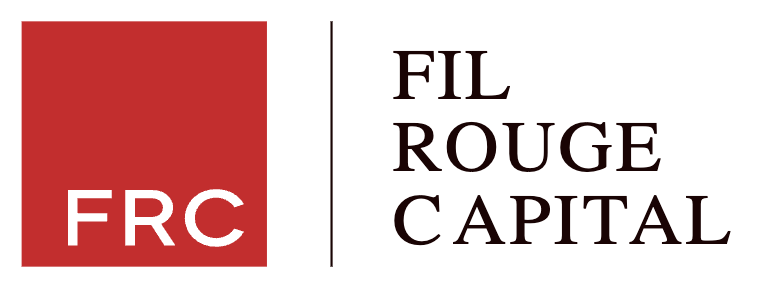Market segmentation by firmographics classifies business clients based on organizational characteristics rather than individual traits. Companies use this approach to sort potential customers into groups that share similar features.
By analyzing attributes like industry, company size, revenue, and location, businesses can personalize their services and marketing strategies for better results.
Firmographic segmentation enables more precise outreach, efficient resource allocation, and improved B2B outcomes.
Core Firmographic Criteria
Key firmographic criteria give businesses a clear framework for segmenting their markets. The most common factors include:
- Industry: Identifies the economic sector and helps modify solutions to relevant challenges.
- Company Size: Measured by employee count, reflects resource capacity and potential deal size.
- Annual Revenue: Indicates purchasing power and market stability.
- Location: Highlights geographic priorities, regulatory requirements, and local market conditions.
- Years in Business: Suggests organizational maturity and reliability.
Using these criteria, companies can focus sales and B2B marketing efforts where the fit is strongest. This model improves targeting accuracy and engagement rates.
Matching Solutions to Business Profiles
Matching business solutions to the right clients begins with mapping products and services to the specific characteristics within firmographic segments.
When sales teams understand who they are reaching, they shape messaging and products to meet real needs. They focus on high-value opportunities, personalize presentations, and set pricing models that suit client capabilities. This results in less wasted effort and higher response rates.
Let’s say a tech company wants to reach mid-sized healthcare providers. These organizations often have a tough time getting new software to work with their old electronic health record (EHR) systems. They deal with things like data silos, security worries, and workflow headaches whenever they try to upgrade or add digital tools. By looking closely at these firmographic details, the tech company can create solutions that easily connect with existing EHRs, provide onboarding support, and make sure everything meets healthcare rules like HIPAA.
Industry
Each industry faces specific challenges, regulations, and purchasing patterns. For example:
| Industry | Typical Needs | Solution Focus |
|---|---|---|
| Manufacturing | Process efficiency, supply chain visibility | Automation, analytics |
| Retail | Customer engagement, inventory management | Omnichannel platforms |
| Healthcare | Compliance, patient records | Secure, integrated systems |
| Financial services | Data security, regulatory compliance | Encrypted platforms, risk management tools |
| Education | Online learning management, student engagement | eLearning systems, interactive platforms |
| Hospitality | Reservation management, guest satisfaction | Booking software, CRM solutions |
Industry-focused segmentation improves prospect qualification and helps B2B marketing teams use relevant case studies, testimonials, and content. Thanks to AI tools like Stryng, which can faithfully reflect a brand’s voice or adapt the tone and type of content to any audience, that job becomes even easier
Company Size and Revenue
Client needs and capabilities greatly depend on organizational size and purchasing power.
Small businesses may seek cost-effective, user-friendly tools, while large enterprises often look for advanced features and scalable solutions.
Company focus regarding size and revenue:
- Small (1–50 employees): Emphasize affordability, simplicity, and flexible contracts.
- Medium (51–500 employees): Highlight integration options, scalable features, and dedicated support.
- Large (500+ employees): Focus on enterprise-grade security, customization, and compliance.
Location and Market Reach
Different locations mean differences in market conditions, regulations, language, and culture. For example, a company selling software in Europe has to comply with strict data privacy laws like GDPR, while the same product in the United States would follow different regulatory standards.
Similarly, businesses operating in multilingual regions, such as Canada, may require support and marketing materials in both English and French to properly engage their target audience.
Companies may need localized service models, support structures, or regulatory adjustments to meet these distinct regional demands.
- A logistics provider should adapt its delivery schedules and services to accommodate regional holidays or infrastructure differences.
- Retailers could offer local payment methods popular in specific countries.
- Manufacturers may modify products to meet local safety certifications.
Gathering and Managing Firmographic Data
The foundation of effective firmographic segmentation is accurate, up-to-date data. Businesses rely on a mix of in-house sources and external partners to build and refine client profiles.
Organizing and managing these records is essential for actionable insights. Many teams use customer relationship management (CRM) systems or dedicated analytics platforms to store, track, and update firmographic fields.
Consistent data entry standards and regular record reviews prevent errors that can skew segmentation efforts.
A chart of record-keeping practices might look like this:
| Practice | Benefit |
|---|---|
| Standardizing input forms | Reduces inconsistency |
| Scheduled data audits | Keeps information current |
| Merging duplicate records | Prevents fragmentation |
| Training staff | Maintains data accuracy |
Data Collection Methods
Public business registries, industry directories, and company websites offer valuable sources.
Many firms strenghten their own databases by subscribing to reputable data vendors that supply verified firmographic details.
Methods for collecting firmographic data include:
- Web scraping for public business info
- LinkedIn and professional network research
- Purchase or subscription to business intelligence datasets
- Surveys and direct outreach to clients
Each method carries its own trade-offs in terms of accuracy, cost, and effort. Combining several sources usually delivers the most reliable results.
Data Quality and Maintenance
Companies implement regular data validation routines, such as automated checks for outdated contact information or changes in business structure.
Scheduled audits and manual reviews catch inconsistencies before they impact campaign performance.
Best practices for data maintenance:
- Flag stale records for review
- Establish update cycles based on industry turnover rates
- Enable easy correction and feedback from sales or support teams
- Monitor changes in client organizations to adjust segmentation promptly
Integrating Firmographics with Other Segmentation Types
Combining firmographic segmentation with other types, such as behavioral, technographic, or psychographic data, makes targeting more precise.
For example, grouping companies by size and industry, then overlaying their recent buying activity or technology usage, uncovers high-potential segments for customized outreach.
B2B marketing teams often build layered audience profiles using mixed segmentation.
Firms can use a simple table to plan segmentation layers:
| Segmentation Type | Uses |
|---|---|
| Firmographic | Basic grouping |
| Behavioral | Buying patterns |
| Technographic | Software/hardware usage |
Final Thoughts
Firmographic segmentation equips teams to pinpoint business clients whose needs correlate closely with the products or services offered.
By working with clean, targeted data and mixing it with other segmentation methods, companies increase relevance and reach in B2B marketing.
Type of industry, company size, revenue, and location are factors for grouping prospects. This segmentation supports efficient allocation of resources and higher conversion rates.
Companies that refine their segmentation practices build stronger pipelines and set themselves up for more meaningful client partnerships. Therefore, we can conclude that firmographics are an essential part of any B2B strategy.



